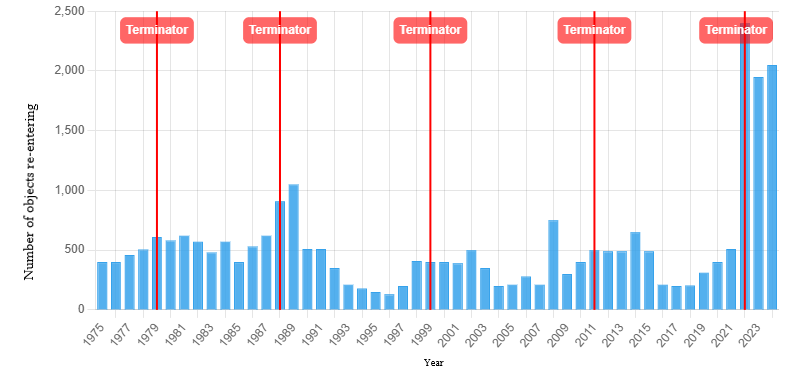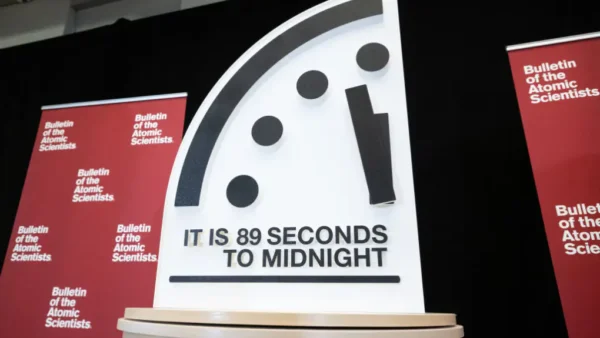The Solar Mystery That Burned Up SpaceX Satellites in 2022: The “Terminator” to Blame?
In 2022, dozens of Starlink satellites disintegrated. Perhaps it wasn’t a “simple” geomagnetic storm, but an internal magnetic event on the Sun: the mysterious “Terminator.”
On February 3, 2022, SpaceX launched 49 Starlink satellites into low Earth orbit. Within days, most of them disintegrated upon re-entering the atmosphere, leaving a fiery trail in the skies over the Caribbean. At the time, Elon Musk’s company attributed the disaster to a modest geomagnetic storm. But today, thanks to new research, a much deeper and more fascinating explanation is emerging: it could have been a magnetic storm linked to an event internal to the Sun, called the “Terminator.”
The Sun “Inflates” Earth’s Thermosphere
When the Sun emits energy through flares and storms, Earth’s thermosphere expands. Although rarefied, its density can increase enough to exert aerodynamic drag on satellites, slowing them down. Once slowed, they lose altitude, experience more friction, and finally disintegrate upon re-entry. But in the case of the Starlink satellites, some anomalies led to the suspicion that a simple geomagnetic storm was not enough to cause the disaster.
Indeed, the storm that hit the Starlinks was classified as G1: the weakest possible, according to NOAA scales. Such an intensity is not enough to explain such a massive loss. Something didn’t add up.
The Sun follows two main cycles: the 11-year cycle, which goes from a minimum to a maximum of solar activity, and a longer 22-year cycle, called the Hale cycle, linked to the reversal of the Sun’s magnetic field. During this cycle, magnetic bands — nicknamed “magnetic doughnuts” — form and move towards the equator, cancelling each other out in an event precisely called the “Terminator.”
According to solar physicist Scott McIntosh, this event is a kind of “final magnetic agony,” a transition phase that triggers intense changes in the Sun’s behavior. After each Terminator event, the Sun “reignites,” suddenly increasing ultraviolet emissions and violently heating the upper layers of Earth’s atmosphere. It is precisely the “Terminator” that occurred at the end of 2021 that may have altered the solar flux in a way that inflated Earth’s atmosphere and triggered the satellite catastrophe.
Number of objects re-entering the atmosphere from Space, each year, between 1975 and 2024

We Know the Sun, But It Still Surprises Us
The data (see graph above) shows that after every Terminator event, there is a peak in orbital decay rates. None has been as marked as that of 2022, the year of the Starlink “massacre.”
Not only was SpaceX affected: Capella Space, another American company that uses satellites for Earth observation, also reported a 2-3 times higher than expected increase in atmospheric drag, with satellites decaying well before their estimated lifespan.
The Sun is the star we know best — yet it still surprises us, often in spectacular ways. As we look forward to a new era of intense solar activity, understanding phenomena like the Terminator is not just a scientific challenge, but a necessity for protecting the technology our world relies on.





